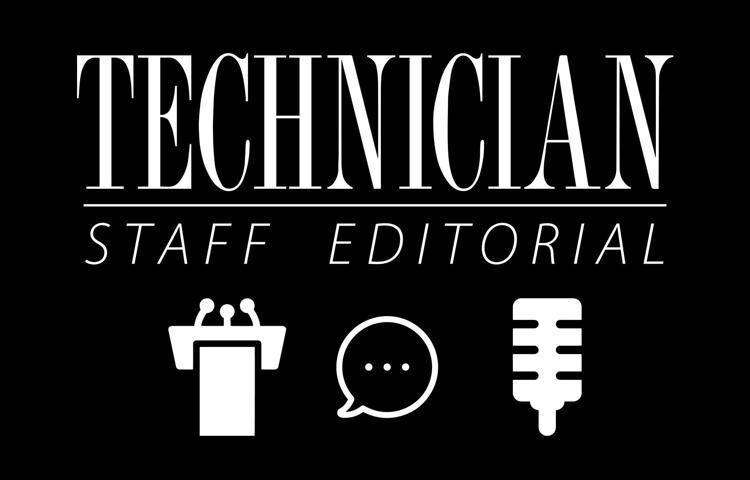With the first week of classes underway, most students will have gone through a number of course introductions. While not all courses are the same, the general expectation is that the day-one class will involve going over the syllabus to some extent, as well as provide an opportunity for students and teacher to become acquainted.
The standard formula for this first class includes a joke or comment about the weather or traffic, a reference to the professor’s reputation or background, getting-to-know-you questions and a dialogue on course expectations and class rules.
Occasionally, to put the course highlights and expectations into an easily digestible context, certain professors will impart some conventional wisdom or relevant factoid to their class. This icebreaking tactic is typically harmless, as long as the information is more accurate than it is well-known.
You’ve heard them before. They can take the form of a clean, simple and often eye-catching “statistic” or succinct conventional wisdom as a clever play on words. A perfect example is the infamously deceptive “humans only use 10 percent of their brain potential,” the falseness of which has thankfully gained significant traction world-wide.
With the astronomically increased rate at which we now discover, exchange and disprove information comes a frantic, and sometimes unbalanced, transformation of the media through which we consume knowledge. Trendy phrases, clickbait-y headlines and “top 10” listicles are among the most prominent, and therefore most widespread and influential, byproducts of this mechanism.
The intense race between fact and fiction has never had such high stakes. Now that anyone can say anything and be heard and believed in an instant, information that sounds right to people, or sounds like it should or could be correct or true, permeates our society. Eventually, it becomes easier and easier for the everyman to skip over and effectively bury undisputed truths, relevant concerns and significant doubts.
Once this happens, there’s no stopping this impure information from entering and establishing itself within the educational structures and mentalities of academia. Professors, teachers and instructors are observably more than comfortable with nonchalantly mentioning these factoids and conventional wisdoms in their classes. This is a dangerous habit, especially when the core takeaway or theme of said factoid becomes integrated and interwoven into the course material.
This tends to happen in introductory, exploratory or developmental courses that plenty of majors require. I had a scare when my MIE 201 teacher (an all-encompassing business course) mentioned that the average audience attention span is around seven minutes. This proclamation was entirely too similar to the common misconception, now famously debunked myth, that our attention spans have become shorter than those of goldfish (less than nine seconds).
This confusion stemmed from a flurry of articles and blogs written in 2015, including Time magazine and the Telegraph, based on results from a Microsoft study conducted by Canadian researchers. After plenty of statistical deconstruction and marketing agenda spotlighting, the claim was exposed for being highly inaccurate. Understandably, I now have less confidence in the validity of any “factoids” about attention spans, and educators boldly stating them in front of classes of 300+ students add to the concern.
Similarly, I had a professional development course (M 100) that operated entirely on the concept of individualistic profiles. While ideally this format would make sense, the emphasis on a wide range of personality identifiers was quite surprising.
On day one, I balked at the ease with which the teacher casually yet proudly mentioned their Myers-Briggs Type Indicator (MBTI).The Myers & Briggs psychological questionnaire is an extremely popular personality identifier, providing detailed descriptions of a range of different cognitive processes, trends and compatibilities. It offers a compilation of “12 personalities” that are each denoted by an assembly of four letters, such as INTP or ENFJ.
According to Vox’s Joseph Stromberg, an estimated 2 million people a year take this test. It is also used by 89 of the Fortune 100 companies as a supplementary hiring mechanism to assess the right “types” for the right “positions.” The descriptions are quite straightforward, simplified, generally positive and offer no spectrum or middle ground.
It is also largely disregarded and heavily criticized by most modern psychologists. According to Adam Grant on “Psychology Today,” “[w]hen it comes to accuracy, if you put a horoscope on one end and a heart monitor on the other, the MBTI falls about halfway in between.”
While this test’s reassuring, simplified and descriptive nature can serve as a fun tool to meet like-minded people, its unstable inconstancy should be more than enough for schools, companies and governments to take it less seriously.
There is no justification for the nonchalance that is applied to inaccurate factoids and conventional wisdoms. Whether these are throwaway comments in conversation or a college educator’s confident statement, it is upon each and every one of us to protect society from being desensitized to such stealthy falsehoods.
We must draw a line once inaccurate-yet-trendy one-liners become the respected norm and invade our classrooms and industries. Correct your teachers, correct your peers and never take any statistic for granted. You never know how wrong it could be tomorrow.







